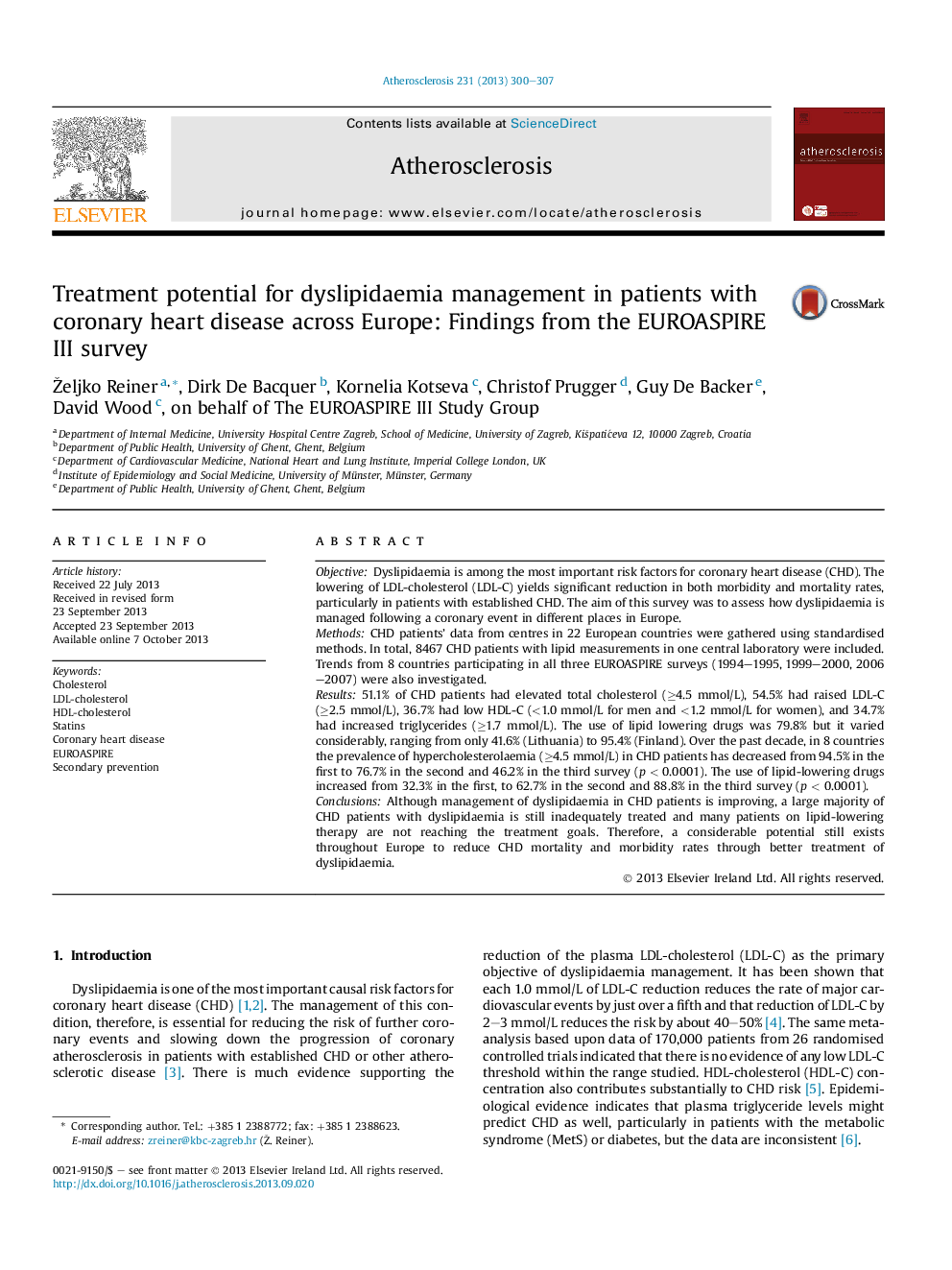| کد مقاله | کد نشریه | سال انتشار | مقاله انگلیسی | نسخه تمام متن |
|---|---|---|---|---|
| 5946374 | 1172358 | 2013 | 8 صفحه PDF | دانلود رایگان |

- Management of dyslipidaemia in CHD in Europe has improved over the last ten years.
- A large majority of CHD patients with dyslipidaemia is still inadequately treated.
- Many CHD patients on lipid-lowering therapy are not reaching the goals for lipids.
- A potential exists to reduce CHD mortality and morbidity by better treatment.
ObjectiveDyslipidaemia is among the most important risk factors for coronary heart disease (CHD). The lowering of LDL-cholesterol (LDL-C) yields significant reduction in both morbidity and mortality rates, particularly in patients with established CHD. The aim of this survey was to assess how dyslipidaemia is managed following a coronary event in different places in Europe.MethodsCHD patients' data from centres in 22 European countries were gathered using standardised methods. In total, 8467 CHD patients with lipid measurements in one central laboratory were included. Trends from 8 countries participating in all three EUROASPIRE surveys (1994-1995, 1999-2000, 2006-2007) were also investigated.Results51.1% of CHD patients had elevated total cholesterol (â¥4.5 mmol/L), 54.5% had raised LDL-C (â¥2.5 mmol/L), 36.7% had low HDL-C (<1.0 mmol/L for men and <1.2 mmol/L for women), and 34.7% had increased triglycerides (â¥1.7 mmol/L). The use of lipid lowering drugs was 79.8% but it varied considerably, ranging from only 41.6% (Lithuania) to 95.4% (Finland). Over the past decade, in 8 countries the prevalence of hypercholesterolaemia (â¥4.5 mmol/L) in CHD patients has decreased from 94.5% in the first to 76.7% in the second and 46.2% in the third survey (p < 0.0001). The use of lipid-lowering drugs increased from 32.3% in the first, to 62.7% in the second and 88.8% in the third survey (p < 0.0001).ConclusionsAlthough management of dyslipidaemia in CHD patients is improving, a large majority of CHD patients with dyslipidaemia is still inadequately treated and many patients on lipid-lowering therapy are not reaching the treatment goals. Therefore, a considerable potential still exists throughout Europe to reduce CHD mortality and morbidity rates through better treatment of dyslipidaemia.
Journal: Atherosclerosis - Volume 231, Issue 2, December 2013, Pages 300-307